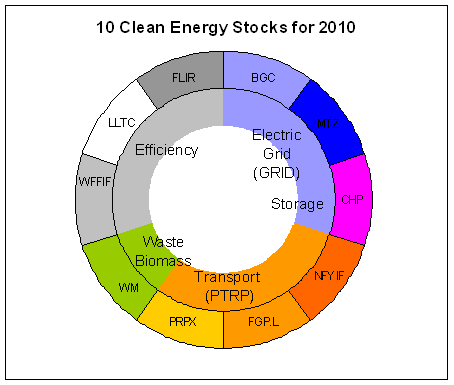The
Apple tablet is almost here. We hear. Actually, we're hearing
a whole lot lately. With this exhaustive guide to every tablet rumor, we've got the clearest picture of the Apple tablet yet.
Uh, What's It Called?
The iPhone was called the iPhone years before Steve Jobs ever took the stage to announce it. We don't have the luxury of such clarity here. I would think the name has no more than two syllables, personally.
 Overwhelmingly what "evidence" there is points to some form of Slate. Not only did Apple register the domain iSlate.com through an intermediary to keep it a secret (discovered by Mark Gurman), they've trademarked it through a shell company called Slate Computing (signed for by Apple's Senior Trademark Specialist) and registered domains and trademarks in Europe through their usual IP law firm, utilizing their standard secret trademark practices, last used with the iPhone. They've also registered "Magic Slate" through the same company. And, while we initially blew off NYT editor Bill Keller referencing an "Apple Slate" in a speech as meaningless, it's a whole lot curiouser now.
Overwhelmingly what "evidence" there is points to some form of Slate. Not only did Apple register the domain iSlate.com through an intermediary to keep it a secret (discovered by Mark Gurman), they've trademarked it through a shell company called Slate Computing (signed for by Apple's Senior Trademark Specialist) and registered domains and trademarks in Europe through their usual IP law firm, utilizing their standard secret trademark practices, last used with the iPhone. They've also registered "Magic Slate" through the same company. And, while we initially blew off NYT editor Bill Keller referencing an "Apple Slate" in a speech as meaningless, it's a whole lot curiouser now.
Update 12/29/2009: Another shell company, iGuide Media—using Apple Senior Trademark Specialist Regina Porter as the signatory—applied for a trademark on iGuide, which seems, from the trademark description, to a be service less so than a piece of hardware:
Downloadable electronic publications in the nature of books, magazines, newsletters, journals, and blogs in the fields of entertainment, sports, science, history, culture, celebrities, news, current events, politics, technology, and education
Borders referenced an "Apple iPAD" in a survey, but it sounds like the sad invention of a survey copywriter who hit caps lock instead of shift, not to mention a digital feminine hygiene product. Apple also registered a trademark for TabletMac, but most likely to protect the Mac brand name from modders (it sounds unwieldy and gross).
Apple's put a lot of effort into iSlate it seems. Is that the name of the Apple Tablet?
When's It Coming?
Well, obviously everybody who picked a day before today is wrong. Which leaves everyday after today! The overall consensus is that's being announced in late January—note, though, that a lot of the people who're part of the new January cabal were the same people convinced it was coming in the fall.
iLounge predicted awfully specifically back in September that "Apple is currently planning to announce it on or before January 19, 2010." The Financial Times
said two days ago that Apple is expected "make a major product announcement on Tuesday, January 26th" at the Yerba Buena Center for the Arts in San Francisco, where Apple's rented a stage for "several days." Silicon Alley Insider says that Apple is going to demo a tablet in January.
But when can you actually hold one? From most to least specific: The Wall Street Journal says the tablet is actually going to ship in March, and an analyst said it's coming in March or April. iLounge says it'll hit stores in May or June, like the iPhone. Digitimes reported Foxconn is supposed to have almost half a million of 'em shipped by April. Little emperor of Apple analysts Gene Munster says the first half of 2010. A bunch of connected Mac people just say 2010.
Everybody from the WSJ to Apple fan sites are convinced the tablet is being announced sometime late next month, shipping 2-6 months afterward, so hype and development can bloom, like the iPhone. (Though most of 'em were wrong three months ago.)

How Much Is It Gonna Cost?
The iPhone was $600. Then sales stopped being a-mazing and it dropped to $400. When the iPhone 3G came out, it went to $200 and everybody bought one. So, uh, how much is the tablet gonna be?
Everybody says roughly the same thing: AppleInsider has said it's "expected to retail for somewhere between the cost of a high-end iPhone and Apple's most affordable Mac notebook." Our insider told us it would "cost $700 to $900," or "more than twice as much as a netbook." Taiwan Economic Times says it's between $800 and $1000. China Times, while they got the date pegged to the price horribly wrong, said 800 bucks. And then there's DigiTimes, who says the whole reason the tablet was "delayed" was because it was getting an OLED upgrade, so it'd be a whopping $1500 to $1700. The final word comes from Steve Jobs who said "we don't know how to build a sub-$500 computer that is not a piece of junk."
Survey—and logic—says it'll be pricier than an iPhone and more expensive than a MacBook. Which doesn't say a lot. If you had to pick a number, $800ish seems like the safest bet.

How Big Is It?
The most important spec—and maybe the biggest mystery—is, well, how big the tablet is. Three sizes dominate rumors, tied to the size of panels produced by display manufacturers: 7 inches, 9.6 (or 9.7) inches, and 10.6 inches.
Let's go from least to most specific. Apple reportedly told publishers it's "small enough to carry in a handbag but too big to fit in a pocket." A company discovered in its traffic logs an "unannounced Apple product with a display somewhere between an iPhone and a MacBook," reported the NYT. The WSJ reported it's "smaller than [Apple's] current laptop computers but bigger than the iPhone or iPod Touch."
Apple analyst king of the dweebs Gene Munster, after speaking to "component contacts" in Asia, says it's between 7 and 10 inches. TechCrunch says it's 7 or 9 inches. Digitimes says there's two tablets, one that's 9.6 inches (with OLED) and another that's 10.6 inches. Taiwan Economic News says 9.6 inches too. Actually respectable news organization Dow Jones says Apple ordered displays from Wintek that are "between 9.7 and 10 inches." Oh, and there might be ginormous tablets somewhere out there.
The Financial Times and Reuters both say it's 10 inches. So does our insider.
iLounge presents a unified theory of the tablet universe that would explain the multiplicity of sizes: There have been three prototypes, and the initial one had a 7-inch screen, which was too small, so the latest version is 10.7 inches. Whatever the exact size, they say, it has "7x the touchable surface area" as the iPhone
Let's just stick with bigger than an iPhone, but smaller than a MacBook.
What's Inside
There's been surprisingly little discussion of the actual specs beyond the size of the screen—storage, memory, processor, etc. Most of what little talk there has been has revolved around the networking capabilities.
There could be versions with 3G and without. Specifically, HSDPA (meaning it would only work on AT&T or T-Mobile in the US). Oh look, a SIM card tray! But maybe it'll be on Verizon said BusinessWeek. Hey, maybe even Verizon LTE 4G wireless!
As for the processor, Intel Germany CEO passed gas about a bigger "version of the iPhone" powered by Atom. Dean Takahashi says that the tablet will be the first device using chips that Apple's designed in-house through PA Semi, the chip company Apple bought a while ago, and that the chips are possibly ARM-based.
Aaaaaannnd it coooooooould have an OLED screen, if it cost 1500 bucks.
A 3G option seems very possible, as does a secret-sauce processor, but who knows?
Who's Involved?
Um, Steve Jobs, duh. A whole bunch of new multitouch engineers. Oh, and the Newton guy is back.
Quanta might be making it. Or Foxconn (who makes the iPhone and got a guy killed over a leaked prototype). With a display made by LG (who makes the gorgeous, if flaky, panel inside the 27-inch iMac.) Or maybe the display's from Wintek, according to Reuters and Dow Jones. The battery might be made by Dynapack.
Besides Apple, again, who knows?

Patent Soup
The thing about patents is that, besides the fact they're patenting something, they don't say a whole lot, at least not about actual products. But here's a few interesting ones pertaining to a tablet.
This patent for a "display housing for a computing device" sure sounds like a tablet, which might fit into the tablet docking station in this patent, and you might use two hands, as shown in this patent, to interact with a multitouchable OS X, generously illustrated in this patent, unless you use a pen (ha ha ha). And it might be bumpy, in a cool way.
Patents don't mean a whole lot, so don't expect any of them to actually make it into a tablet. They could, though.
The Backstory
It's fairly well known the iPhone was born from efforts to develop a touchscreen tablet computer. It was simply miniaturized, and uses tech from FingerWorks, a touch interface company Apple bought. The NYT reported Apple's been working on it since 2003, when they built several prototypes using a battery-slaying PowerPC processor. Our insider said that Apple's been working on it for 4-6 years, and that the first prototype of the current version was developed in 2008. Steve Jobs killed the PowerPC tablet, according to the NYT, because Jobs asked what tablets were good for besides surfing the web while sitting on the toilet. The WSJ reported he's killed it twice already.

What's It Going to Do?
Perhaps the most important question of all: What's it actually like?
Well, it depends on the OS. iPhone OS 3.1 had clear traces of new Apple iProducts, and some people say it's a bigass iPod touch, or at least running iPhone OS, which sorta fits with iPhone app developers supposedly being asked to make higher res versions of their apps for demonstration. It apparently fits in with the iTunes remodeling Apple's got going on.
The NYT reported "You will be very surprised how you interact with the new tablet," whatever that will come to mean. As much as Steve Jobs saying they've got some "interesting ideas" about small computers, presumably. Martha Stewart is hyped about it, maybe 'cause it has something to do with diners.
Most of the excitement lately is that it's going to redefine newspapers, books and magazines, which we heard from some publishers, and maybe textbooks, which an insider told us. We're not the only ones who've heard it's got an ebook bent.
Everybody pre-conceived the iPhone based on the iPod and, to a lesser extent, the Newton. Everybody was wrong. Today, most everybody is pre-conceiving the tablet based on the iPhone. Maybe we're all wrong again, or maybe the leaks are better this time.
Your Turn
You know our mantra about rumors: Never trust them. But putting all of them together, we've definitely got some ideas now.
If there's any rumor we missed—or you have a tip (we're good at keeping secret identities)—let us know.
Source : Guizmodo, 30/12/09


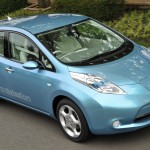 Nissan will be the first auto maker to put over 10,000 electric cars on U.S. highways. Major cities have already committed to over 10,000 Nissan Leaf and over 10,000 charge stations. Nissan will start taking dealer orders from individuals in the spring of 2010. Nissan plans to make the 5-seat hatchback affordable, but sale and/or lease options have not been finalized. The
Nissan will be the first auto maker to put over 10,000 electric cars on U.S. highways. Major cities have already committed to over 10,000 Nissan Leaf and over 10,000 charge stations. Nissan will start taking dealer orders from individuals in the spring of 2010. Nissan plans to make the 5-seat hatchback affordable, but sale and/or lease options have not been finalized. The 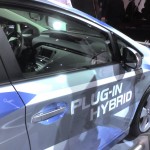 Toyota Prius Plug-in Hybrid (PHV) will build on the million car success of Toyota hybrids. At first glance, the PHV looks like another Prius until you spot the J1772 plug for smart charging. Five hundred PHV are now being put into fleet trails from cities to car sharing services. In 2011, U.S. dealer orders should begin. Toyota will initially control costs by only using a 5kWh battery for a 14 mile electric range. In 2012, Toyota will expand its offerings to include a pure battery-electric FT-EV.
Toyota Prius Plug-in Hybrid (PHV) will build on the million car success of Toyota hybrids. At first glance, the PHV looks like another Prius until you spot the J1772 plug for smart charging. Five hundred PHV are now being put into fleet trails from cities to car sharing services. In 2011, U.S. dealer orders should begin. Toyota will initially control costs by only using a 5kWh battery for a 14 mile electric range. In 2012, Toyota will expand its offerings to include a pure battery-electric FT-EV.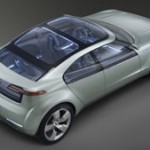 General Motors wants to be the plug-in leader with the Chevy Volt, a plug-in hybrid with 40 miles of electric range and up to 500 miles by engaging a small gasoline engine to act as a generator. Bob Lutz says than Chevy hopes to build at least 8,000 in 2011. GM has a complete E-Flex roadmap which envisions added offerings. Converj may become the Cadillac of extend-range electrics. In the future, Opel may offer a diesel plug-in hybrid in Europe. Look for a range versus cost battle with Toyota, as the Volt achieves more electric range by adding to vehicle cost with a 16kWh battery.
General Motors wants to be the plug-in leader with the Chevy Volt, a plug-in hybrid with 40 miles of electric range and up to 500 miles by engaging a small gasoline engine to act as a generator. Bob Lutz says than Chevy hopes to build at least 8,000 in 2011. GM has a complete E-Flex roadmap which envisions added offerings. Converj may become the Cadillac of extend-range electrics. In the future, Opel may offer a diesel plug-in hybrid in Europe. Look for a range versus cost battle with Toyota, as the Volt achieves more electric range by adding to vehicle cost with a 16kWh battery.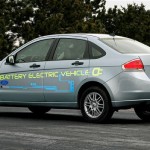 Ford will be selling at least three electric cars by the end of 2011. The best seller will be the
Ford will be selling at least three electric cars by the end of 2011. The best seller will be the 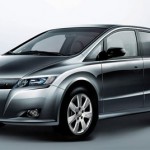 BYD has legendary investor Warren Buffet as a major investor over $200 million invested. BYD is now selling its plug-in hybrid and E6 battery-electric car in China. We expect the plug-in hybrid to be a freeway-speed electric car price leader in the U.S. in 2011. The E6 battery-electric is likely to be more expensive with enough batteries for a 250 electric range. These may take longer than expected to be selling in the U.S. due to tough safety, regulatory hurdles, and charging standards. Fleet sales are likely before BYD establishes consumer channels.
BYD has legendary investor Warren Buffet as a major investor over $200 million invested. BYD is now selling its plug-in hybrid and E6 battery-electric car in China. We expect the plug-in hybrid to be a freeway-speed electric car price leader in the U.S. in 2011. The E6 battery-electric is likely to be more expensive with enough batteries for a 250 electric range. These may take longer than expected to be selling in the U.S. due to tough safety, regulatory hurdles, and charging standards. Fleet sales are likely before BYD establishes consumer channels. Fisker Karma is a luxury sports plug-in hybrid with prices starting around $90,000. With a $528 million DOE conditional loan, Fisker is moving into production with plans to start shipping Karmas to dealers in late 2010. A more affordable family sedan is planned for 2012.
Fisker Karma is a luxury sports plug-in hybrid with prices starting around $90,000. With a $528 million DOE conditional loan, Fisker is moving into production with plans to start shipping Karmas to dealers in late 2010. A more affordable family sedan is planned for 2012.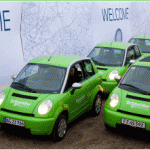 Think has been selling its smaller battery-electric City car in Europe for years. Many of the Copenhagen climate delegates were transported with Think EV. Now Think is evaluating eight U.S. states to determine the best site for a new 16,000 EV per year factory. With new capital from EnerDel, Valmet, and Kleiner Perkins, Think hopes to have its financial struggles in the rear view mirror. Think hopes to have 2,500 on U.S. roads by the end of 2010.
Think has been selling its smaller battery-electric City car in Europe for years. Many of the Copenhagen climate delegates were transported with Think EV. Now Think is evaluating eight U.S. states to determine the best site for a new 16,000 EV per year factory. With new capital from EnerDel, Valmet, and Kleiner Perkins, Think hopes to have its financial struggles in the rear view mirror. Think hopes to have 2,500 on U.S. roads by the end of 2010. 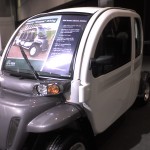 Chrysler has about 40,000 of the GEM 25-mph light electric vehicles (LEV) on the U.S. roads in university towns, fleets, and retirement communities. With federal and local tax breaks, the net cost is often under $10,000. With the growth of electric cars and charging stations, sales may actually increase for cost-leading LEV. Yes, under the new Fiat leadership it was disappointing that Chrysler dropped its ENVI sports car, SUV, and minivan plug-in offerings. We will see if GEM remains part of Chrysler.
Chrysler has about 40,000 of the GEM 25-mph light electric vehicles (LEV) on the U.S. roads in university towns, fleets, and retirement communities. With federal and local tax breaks, the net cost is often under $10,000. With the growth of electric cars and charging stations, sales may actually increase for cost-leading LEV. Yes, under the new Fiat leadership it was disappointing that Chrysler dropped its ENVI sports car, SUV, and minivan plug-in offerings. We will see if GEM remains part of Chrysler.
 Overwhelmingly what "evidence" there is points to some form of Slate. Not only did
Overwhelmingly what "evidence" there is points to some form of Slate. Not only did 




